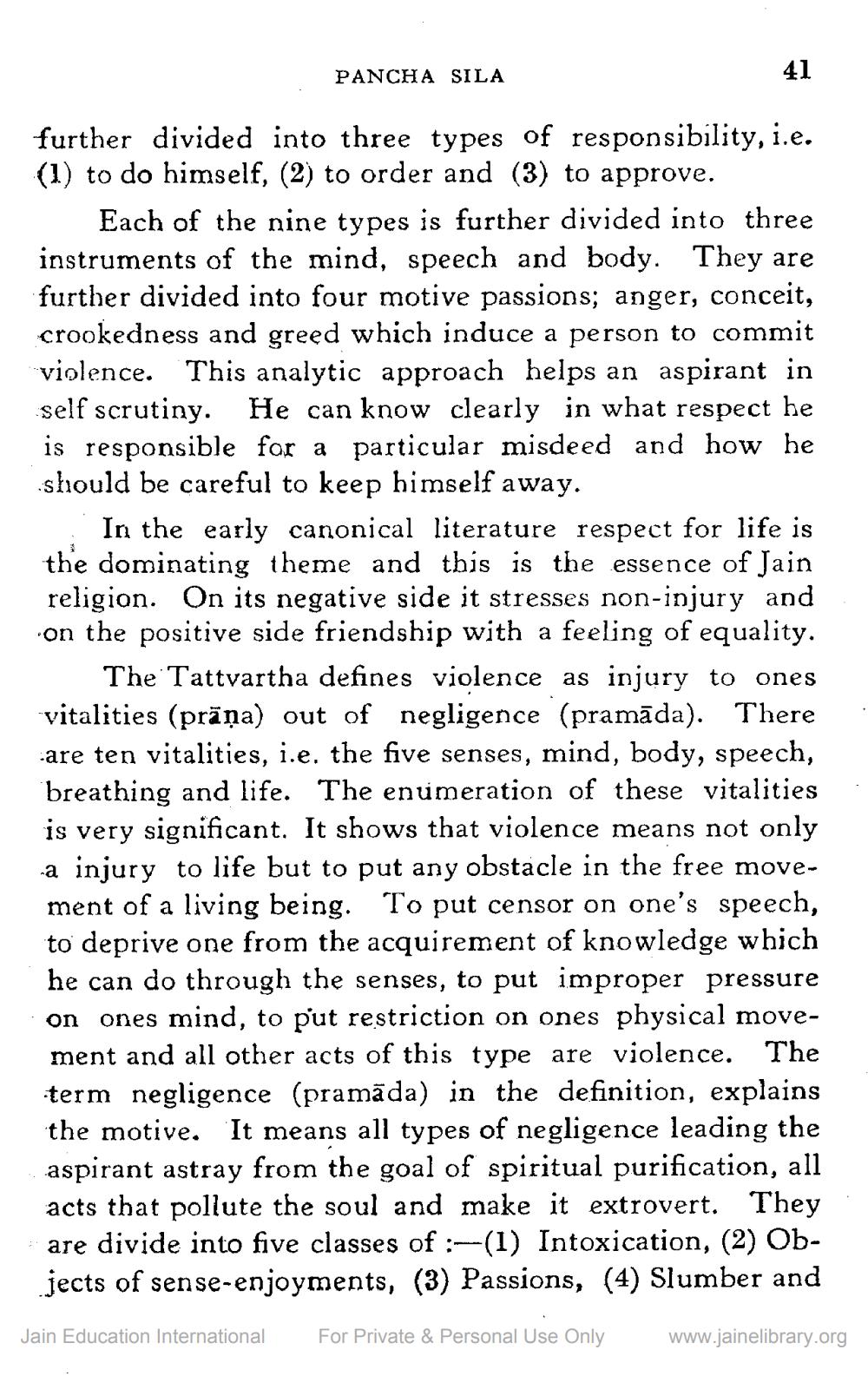________________
PANCHA SILA
41
further divided into three types of responsibility, i.e. (1) to do himself, (2) to order and (3) to approve.
Each of the nine types is further divided into three instruments of the mind, speech and body. They are further divided into four motive passions; anger, conceit, crookedness and greed which induce a person to commit violence. This analytic approach helps an aspirant in self scrutiny. He can know clearly in what respect he is responsible for a particular misdeed and how he should be careful to keep himself away.
In the early canonical literature respect for life is the dominating theme and this is the essence of Jain religion. On its negative side it stresses non-injury and on the positive side friendship with a feeling of equality.
Jain Education International
The Tattvartha defines violence as injury to ones vitalities (prāņa) out of negligence (pramāda). There are ten vitalities, i.e. the five senses, mind, body, speech, breathing and life. The enumeration of these vitalities is very significant. It shows that violence means not only a injury to life but to put any obstacle in the free movement of a living being. To put censor on one's speech, to deprive one from the acquirement of knowledge which he can do through the senses, to put improper pressure on ones mind, to put restriction on ones physical movement and all other acts of this type are violence. The term negligence (pramada) in the definition, explains the motive. It means all types of negligence leading the aspirant astray from the goal of spiritual purification, all acts that pollute the soul and make it extrovert. They are divide into five classes of :-(1) Intoxication, (2) Objects of sense-enjoyments, (3) Passions, (4) Slumber and
For Private & Personal Use Only
www.jainelibrary.org




